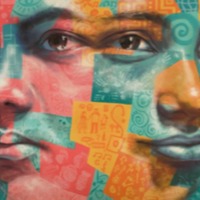
Anisa L.
The Global Slavery Index has estimated that there are almost 3 million people living in conditions of modern slavery in the region of the Middle East and North Africa. Oman is a transit and destination country for men and women primarily from India, Pakistan, Bangladesh and the Philippines, most of whom migrate willingly as domestic servants or low-skilled workers in the country’s construction, agriculture and service sectors. Trafficked persons subsequently experience conditions of modern slavery such as the confiscation of passports, restrictions on movement, non-payment of wages, long working hours without rest and physical or sexual abuse. Anisa L. from Zanzibar, left to find work abroad in Oman in 2011 where she worked for 2 years for 21 hours a day with no rest and no days off. From Oman Anisa travelled to Dubai for 2 years from 2013 to 2015 where she was charged for migrating by the agency arranging her travel.
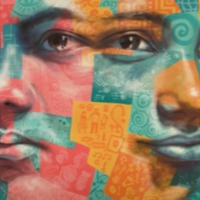
Ana B
There are an estimated 57,700 people in modern slavery in the US according to GSI estimates. The US attracts migrants and refugees who are particularly at risk of vulnerability to human trafficking. Trafficking victims often responding to fraudulent offers of employment in the US migrate willingly and are subsequently subjected to conditions of involuntary servitude in industries such as forced labour and commercial sexual exploitation. Low, semi- and unskilled domestic and foreign labourers are at risk of forced labour within the agricultural sector. Migrants from Mexico have been found in conditions of forced labour in the USA, where they are subjected to poor living and working conditions including excessive working hours, withholding and non-payment of salaries, confinement to plantations, refusal of medical care and physical and sexual abuse. Ana crossed the Mexico-US border seeking the American Dream and to provide a better life for her son. However instead, she found herself forced to work long hours picking fruit, with little pay and poor living conditions under the threat of violence. Ana was finally freed when two people she had asked for help called the police.
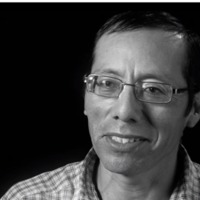
Victor
There are an estimated 57,700 people in modern slavery in the US according to GSI estimates. The US attracts migrants and refugees who are particularly at risk of vulnerability to human trafficking. Trafficking victims often responding to fraudulent offers of employment in the US migrate willingly and are subsequently subjected to conditions of involuntary servitude in industries such as forced labour and commercial sexual exploitation. Victor travelled to the US on a work visa where he thought he would be able to get a better life. However, upon arrival his employer took all his documents and subjected him to verbal and physical abuse. In this narrative Victor talks of the importance of speaking out and asking for help.
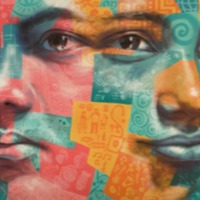
Amina*
The UK National Crime Agency estimates 3,309 potential victims of human trafficking came into contact with the State or an NGO in 2014. The latest government statistics derived from the UK National Referral Mechanism in 2014 reveal 2,340 potential victims of trafficking from 96 countries of origin, of whom 61 percent were female and 29 percent were children. Of those identified through the NRM, the majority were adults classified as victims of sexual exploitation followed by adults exploited in the domestic service sector and other types of labour exploitation. The largest proportion of victims was from Albania, followed by Nigeria, Vietnam, Romania and Slovakia. This survivor of modern slavery tells the Salvation Army of how she travelled from Sierra Leone to the UK after being promised a better education. Instead, she was trafficked into domestic servitude. This survivor was made to do all the housework, denied any privacy and never received any wages for her work. It was only when one of her employer’s children’s teachers called the police that this survivor was able to escape.
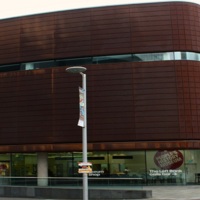
People's History Museum
The People's History Museum (PHM) is Britain’s national museum of democracy, telling the story of its development in Britain; past, present and future. It is located in Manchester, the world's first industrialised city and aims to ‘engage, inspire and inform diverse audiences by showing there have always been ideas worth fighting for’. Attracting over 100,000 visitors a year, with free entry, the museum outlines the political consciousness of the British population beginning with the Peterloo Massacre in 1819. The British transatlantic slave trade and the abolition movement feature in this discussion early on in Main Gallery One. In a small display, the interpretation discusses the role of slave-produced cotton in the rise of Manchester as an industrial powerhouse. It goes on to describe the important role that the people of Manchester had in supporting the abolition campaign. The focus is on the local experience. This is also illustrated with one of the exhibition’s key interpretive characters, William Cuffay, a mixed-race Chartist leader whose father was a former slave. In Main Gallery Two, the displays are brought closer to the present day, other issues explored include anti-racism and attitudes towards migration and multiculturalism. There is a clear link, although not explicitly expressed, in the interpretive text between these ideas and the lasting legacies of Britain's involvement in the slave trade.
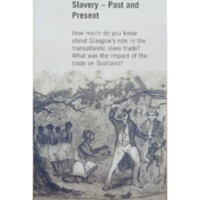
Towards Understanding Slavery: Past and Present
The Towards Understanding Slavery: Past and Present initiative by Glasgow City Council aimed to increase understanding of the human effects of the transatlantic slave trade, and explore its impact on Scotland's national heritage and Glasgow's history. A series of events, exhibitions and education programmes ran across the city throughout 2007. These included an exhibition of William Blake's works relating to the idea of slavery at the Burrell Collection, and a photographic exhibition by Graham Fagen, 'Downpresserer', at the Gallery of Modern Art, examining the cultural heritages of Scotland and Jamaica. There was a series of performances and talks at Kelvingrove Art Gallery and Museum, and events at the People's Palace and Winter Gardens focused on links between Glasgow's tobacco trade and slavery through the family portrait of the 'tobacco lord' John Glassford (there is said to be a figure of a young black man behind Glassford's chair that has been deliberately obscured or painted over). A year-long programme of lectures, schools events and exhibition highlighting the life of African communities in Glasgow took place at St Mungo Museum of Religious Life and Art.
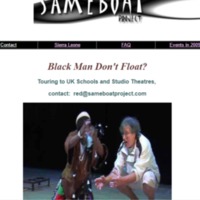
Black Man Don't Float?
Black Man Don't Float? is a play developed by Sameboat Project, a not-for-profit organisation working in collaboration with the Pierian Centre Bristol, Gecko Theatre Ipswich, and the Arrow Project at University College Plymouth. Set in the ocean off West Africa, a white yachtsman collides with an African economic migrant who is trying to reach the Canaries in a home-made vessel. They have to co-operate to survive, but their differences lead to confusion. Performed by West African performer Ayodele Scott and UK-based writer and performer Martin Hubbard, Black Man Don't Float? was shown in the UK and then travelled to Sierra Leone. The show was accompanied by a workshop entitled Fair Share, exploring issues around the fair sharing of resources, and the challenges facing developed and developing nations in their negotiations about aid, trade and the exploitation of natural resources.
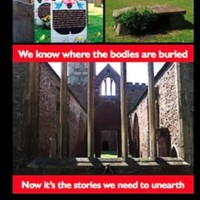
Diverse Stories
The Diverse Stories project began in 2007 with participants from Malcolm X Elders, an Afro Caribbean elders and community group in Bristol, taking part in a creative writing project to mark the bicentenary. This was jointly supported by Show of Strength Theatre Company, Our Stories Make Waves and English Heritage. Participants visited the ruined Temple Church in Bristol and explored its links with the slave trade and abolition movement. Their responses included a range of dramatic monologues covering themes such as slavery, racism, trade, childhood memories of Jamaica and migration from the Caribbean. These were read at a performance by a professional actor. In 2008 the project was given a permanent record by a selection of the stories being recorded on audio CD.
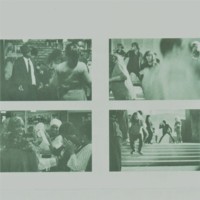
Down at the Bamboo Club: Film, Participation and Re-enactment
Down at the Bamboo Club was organised by Picture This, an artists' film and video commissioning agency in Bristol. The project was an exhibition of artists' video exploring Bristol's cultural histories and ideas of legacy. Contemporary artists worked with community groups to develop films and events that used the device of re-enactment to explore subjects such as community relations, identity, the legacy of slave trading in the city and histories of division and solidarity. One such film was 'Bamboo Memories' by Barby Asante. The Bamboo Club was a legendary Bristol nightclub in the 1960's and 1970's which holds great significance for older generations in the city as a place where first groups of African-Caribbeans socialised with white Bristolians.
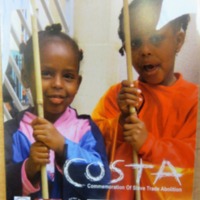
COSTA
COSTA stood for 'Commemoration of Slave Trade Abolition' and was a project of Sul'Art, a community art organisation in Bristol. Sul'Art delivered a programme of music, drama, art and dance to a number of schools and community groups to explore meanings of the bicentenary, working around themes such as migration, identity, celebration of difference, critiques of consumerism and intergenerational dialogue. Sul'Art also presented a number of performances of the professional jazz show ‘King Cotton’, dramatising the story of the cotton industry in music, song and film.
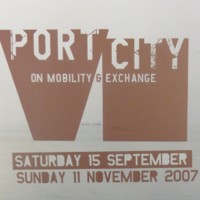
Port City: On Exchange and Mobility
Port City was a large-scale exhibition featuring over 40 international artists and addressing issues of migration, trade and contemporary slavery. Set in the arts centre and gallery Arnolfini, it was accompanied by a programme of art, music, film, literature and educational activities. Coinciding with the bicentenary year, several works explored Bristol's histories of trade, as well as a contemporary port. For Seeds of Change, Brazilian artist Maria Thereza Alves researched sites around the Floating Harbour where ballast would have been off-loaded. The ballast seeds discovered were germinated by local groups so as to make a garden of ‘living history’, reflecting the different routes travelled by Bristol merchants. Other highlights included a model of a 'global village' made from sugar by Meschac Gaba and kaleidoscopes showing contemporary scenes from the triangle of the transatlantic slave trade by Mary Evans.
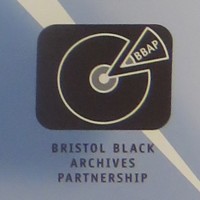
Bristol Black Archives Partnership
The Bristol Black Archives Partnership (BBAP) was set up to collect, protect and make available the heritage of Bristol's local black history. The partnership involved communities, heritage organisations and academic organisations coming together to collect and make accessible the archives - films, photographs, documents and objects - that reflected the experience and contribution of black people in Bristol. BBAP aimed to provide learning resources for a better understanding of Bristol's multicultural history: the 'Me, We, Making History' calendars celebrated local black achievers; 'My Legacy Journal' was made available for African-Caribbean people to record their own family identity, history and stories. A Black Bristolians Teaching Pack was produced, alongside a travelling exhibition based on the project's research entitled 'The Black Presence in Bristol - 16th Century to the Present Day'.
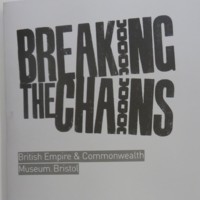
Breaking the Chains
Breaking the Chains opened at the British Empire and Commonwealth Museum to coincide with the bicentenary, and told the story of the British transatlantic slave trade and its abolition. Developed in partnership with Bristol City Council's Museums, Galleries and Archives' Service, the exhibition used artefacts, film and testimony to challenge perceptions about Britain's involvement in the slave trade and its legacy today. It featured a multimedia gallery of digital memories and feelings on the contemporary legacies of the slave trade; interactive sound stations to see and hear personal testimonies and the power of black music; and the ‘Me deya’ gallery, led by Firstborn Creatives, a collection of work from artists and communities who wished to share their creative pieces about the legacies of the slave trade. Associated events included African music for children, community dance events and public debates.
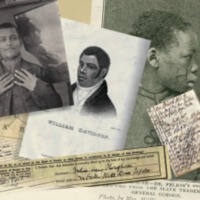
History Detectives: Black People in the West Midlands 1650-1918
SCAWDI are a Birmingham based community group specialising in working with local volunteers to research the early presence of Black people in the West Midlands and learn more about their local history. Different projects sought to explore this heritage. ‘In the beginning …’ looked at enslaved Africans who came to the West Midlands to live with wealthy land owners in the area’s stately homes. ‘History Detectives’ took this work further to identify and construct biographies for the black individuals who came to the West Midlands before 1918. The project created a database of almost 200 individuals: the characters explored connect to themes of slavery, class, migration and religion. ‘A day in the life …’ created a black heritage trail detailing the locations attached to these stories.
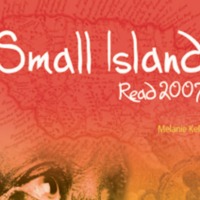
Small Island Read 2007
This community-based mass reading scheme drew together partners from four areas of the UK; Bristol and the South West (Great Reading Adventure), Liverpool and the North West (Liverpool Reads), Hull (Hull Libraries) and Glasgow (Aye Write! Bank of Scotland Book Festival). 50,000 free copies of Andrea Levy’s award-winning novel 'Small Island' were distributed - a story of Jamaican slave descendants arriving in the UK in the 1940s, it addressed resonant themes of identity, racial awareness, forgiveness, ignorance and survival. There was also an accompanying reader's guide. Younger audiences took part by reading Benjamin Zephaniah’s 'Refugee Boy', or Mary Hoffman’s 'Amazing Grace'. Activity packs inspired discussion of historic and contemporary issues addressed in the texts. Featured are some of the responses of pupils from Parson Street Primary School, Bristol, to 'Refugee Boy'.
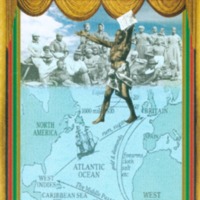
Leeds Bicentenary Transformation Project
This collaborative community initiative celebrated African and Caribbean culture in Leeds, with a focus on commemorating the Abolition Act by 'highlighting African achievement, liberation and aspirations'. New exhibitions, publications and resources were produced and over 100 bicentenary events organised under different themes: Education and Museums; Arts and Carnival Culture; Churches and Abolition; Legacy; Black History and Community Development; Media and Communications. Highlights included the photographic exhibition and pamphlet 'From Abolition to Commonwealth', which remembered indentured labour in Africa and the Caribbean after 1807, and the 40th anniversary of Leeds West Indian Carnival, with themes that highlighted heritage, liberation, respect and freedom. Project outputs included an education pack, black history classes, concerts, church services, lectures and performances.